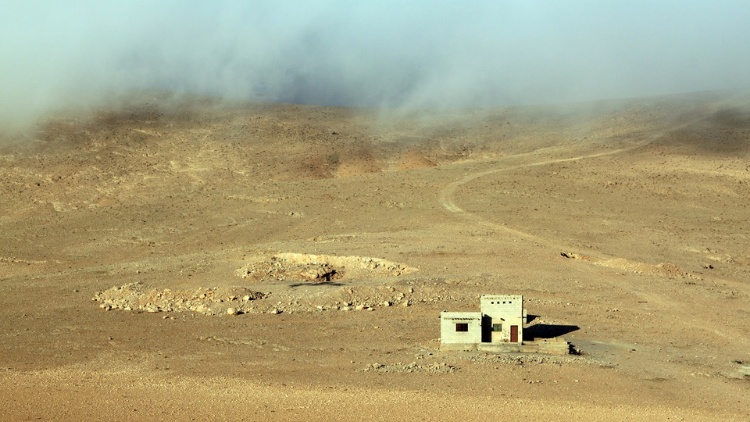MENAPOL Blog
A Future for Cooperation in an Increasingly Hot Middle East

Climate Change hits the MENA region especially hard, and multiplies existing threats. This raises the need for cross-border collaboration and smart interventions.
The Middle East and North Africa (MENA) is one of the regions in the world that has been most affected by climate change. According to NASA, it has suffered from an almost continuous drought since 1998. The World Bank estimates that 80-100 million of its inhabitants will be exposed to water shortage by 2025. By 2050, temperatures will have risen by 4 °C according to the German Max-Planck-Institut. Summer heat is expected to increase more than twice the global average. By the end of this century, daytime highs could often reach 50 °C, on 200 days a year.
Colin Price, Professor of Atmospheric Sciences in the Department of Geosciences at Tel Aviv University, notes that the region already meets all criteria of climate change: higher temperatures, less precipitation, a higher sea level. “In total, rainfall is less, but if it comes it is often more intense and causes flooding”, he explains. The higher intensity of winter storms hits a fast-growing and increasingly vulnerable population in ever more crowded cities. In Egypt for instance, 100 million inhabitants now live on five per cent of the land. At risk here is for instance Alexandria, one of the country’s largest cities on the Mediterranean Sea. A large part of it is expected to disappear as a result of the erosion of the coast. Across all MENA countries the scarcity of water leads to an accelerating rural exodus to already overpopulated cities. “All of these phenomena have an effect on food security”, says Price.
Olivia Lazard is a visiting scholar at Carnegie Europe. Her research focuses on the geopolitics of climate, and the risks of climate change and environmental collapse. She describes how humans (or their livestock) consume ecological buffers, and how in the process land can lose its ability to retain water, thus affecting rainfall patterns. “This can lead to catastrophic flooding, as we have seen for instance in Yemen in recent years”, says Lazard.
In the MENA region such disastrous events often hit populations that already live in protracted crises. The consequences do not stop at the borders, as became most clear in the example of Syria. The country’s farmers had been suffering from an extended drought in the years 2007-2010 which pushed many of them into already cramped urban centres like Dara’a, Damascus and Aleppo, thus fuelling social unrest. The war then triggered an exodus, first into the neighbouring countries, then also into Europe.
The case of Syria serves to show how climate change can become a “threat multiplier” beyond the region. In re-entering the Paris climate agreement and re-elevating global warming to the forefront of national security concerns the US government under President Joe Biden recognizes the paramount importance of the issue. “There is little about what the Department does to defend the American people that is not affected by climate change,” said Defence Secretary Lloyd Austin in January.
Sherri Goodman, Senior Strategist at the Center for Climate and Security and former Deputy Undersecretary of Defense (Environmental Security), is an expert on this nexus. She sees water (scarcity) as “a motivating factor” for peace. While the common enmity towards Iran was the main driver for the signing of the Abraham Accords by Israel and the United Arab Emirates, clean energy may subsequently become one of the main areas of cooperation between the two countries. “Both are technological leaders and innovators in this field”, says Goodman, “though Israel has had a head start.”
The member states of the Gulf Cooperation Council (GCC) have lately reduced their subsidies for fossil fuels to help foster clean energy development. Aisha al-Sarihi, a non-Resident Fellow at the Arab Gulf States Institute in Washington D.C., also highlighted tangible progress made in developing green hydrogen in partnership with European countries like Germany. She was speaking at a conference of the Middle East Policy Council titled "The Impact of Climate Change on the Middle East."
The Jewish state has for decades also invested heavily in water technology knowhow and developments. Drip irrigation, grey water recycling and large-scale desalination have literally made vast parts of the Israeli desert bloom. In this field the potential for cooperation, especially with neighbouring states, is far from exhausted. The Israeli-Jordanian Red Sea-Dead Sea water canal, though criticized by many environmentalists, is seen as the only project that could possibly help save the shrinking Dead Sea from further decline. Yet is has been stuck for nearly two decades due to bilateral tensions and Israeli foot-dragging.
Recently the Israeli government under Prime Minister Netanyahu even delayed the approval for additional water from the Jordan River due to political tensions, thus effectively using the resource as a diplomatic pressure tool. As one of the world’s most water-starved countries the Hashemite Kingdom is effectively at the mercy of the Israelis. Jordan’s own resources are far from enough to sustain its population of close to ten million people, including around 1.5 million war refugees from Iraq and Syria.
The country does have plenty of space though, something that could be put to use for mutual benefit, argues Colin Price: Israel could help to build solar farms in the Jordanian desert, thereby generating employment and income across the Jordan. “The country will not be able to isolate itself in the region, at least not from the debate about its responsibility”, he says. However, the persistent political disparities between the two countries especially lately, have stood in the way of necessary cooperation.
Water scarcity leads to agriculture degradation and decreased yields from crops, that in turn can be exploited by extremist groups to gain support. The combined instability causes populations to flee.
If an exodus similar to the Syria one repeats itself in the region “these people may be looking to get to the only stable country in the region”, warns Price. Additionally, climate refugees – though having no status under international law – are unlikely to return to their communities, adding additional pressure on the international community to come up with an integrated response, noted Yara Asi, a non-resident fellow at the Arab Center (Washington DC), at the Middle East Policy Council conference.
Most experts agree that moving beyond fossil fuels is key for stopping – or rather: slowing – climate change. But that is a task that can only be carried out globally.
On the regional level the attention should additionally shift to the regeneration of the environment, to re-build water retention landscapes, in order to foster a cooler climate. Olivia Lazard points to the example of the Weather Makers in Sinai. This group of Dutch scientists is currently in talks with the Egyptian government to re-green the Egyptian peninsula by using silt extracted by large-scale dredging from the bottom of Lake Bardawil, a lagoon on the Mediterranean coast. A Sinai half covered in forest could change the precipitation patterns and thus the climate of the entire region, they argue. The Weather Makers are motivated, among other things, by a similarly large-scale re-greening project that was successfully carried out in Northeast China in the 1990s.
But efforts do not need to be gigantic as in the case of the Weather Makers, says Lazard. She points to Northern Jordan where vast landscapes of greenhouses over-consume the water and soil resources in the region. “The government should instead build water retention landscapes”, she suggests, “and the farmers should use indigenous seeds for plants that consume less water.” The key according to her is “to grow the ability of lands to grow crops”.
For local governments and international donor countries, as well as for NGOs and UN institutions, mitigating the effects of climate change seems more sustainable and much cheaper than spending the money on assisting climate refugees.
About the Author

